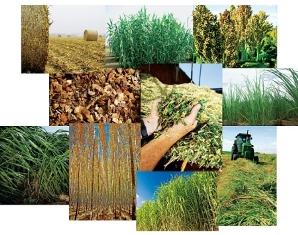“Biofuel feedstock suppliers play a crucial role in the biofuel industry. The key demands for biofuel are affordability, continuous supply, long-term planning, and large-scale operations.”

In the face of increasing global energy demand concerns over depleting fossil fuel reserves and environmental degradation. The need for sustainable and renewable energy sources has become more urgent than ever. Biofuels, derived from organic materials, have emerged as a promising alternative to conventional fossil fuels. Suitable feedstock selection plays a pivotal role in determining efficiency, sustainability, and environmental impact of biofuel production.
Biofuel is a fuel type where energy is derived from biological carbon fixation. Biofuels include fuels derived from waste oils, solid biomass, and various other sources, also known as renewable fuels. Vegetable oils, animal fats, chemical waste, and agricultural waste are raw materials for biofuel. Looking at the demand for biofuel and the long-term supply, we suggest going for your plantation.
Biofuel Feedstock Types
Biofuel feedstock refers to the raw materials used biofuels production through various conversion processes, such as fermentation, transesterification, and thermochemical processes. These feedstocks can be broadly categorised into three main types:
- First-Generation Feedstock: First-generation biofuel feedstock includes crops cultivated for food or animal feed. This category comprises food crops such as sugarcane, corn, wheat, and vegetable oils like soybean and rapeseed. The widespread availability and widespread use of these feedstocks have raised concerns about their potential to compete with food production. It leads to higher food prices and deforestation.
- Second-Generation Feedstock: Second-generation biofuel feedstock consists of non-food crops or agricultural residues that do not compete with food production. These feedstocks include lignocellulosic materials like agriculture waste (corn stover, wheat straw), dedicated energy crops (switchgrass, miscanthus), and forestry residues. Second-generation feedstocks are abundant and can be grown on marginal lands, reducing the risk of land-use conflicts.
- Third-Generation Feedstock: Third-generation biofuel feedstock involves algae to produce biofuels. People can grow algae in diverse environments, including wastewater and brackish water. It minimises the pressure on freshwater resources. Algae-based biofuels offer high oil yields. Conventional agriculture can cultivate algae on land unsuitable for it.
Considerations for Feedstock Selection
Several factors influence the choice of biofuel feedstock:
- Yield and Productivity: Feedstocks with high biomass yield and rapid growth rates are preferable to ensure efficient and scalable biofuel production.
- Land Use: The impact on land use for feedstock cultivation should be minimal, avoiding competition with food production and preserving natural habitats.
- Water Requirements: In many areas, water scarcity is a problem. Pick feedstocks that can be cultivated using less water.
- Carbon Footprint: The life cycle emissions of biofuels should be lower than those of fossil fuels. Favors feedstocks with a positive net energy balance and reduced greenhouse gas emissions.
- Processing Technology: Different feedstocks require specific processing methods. Compatibility with existing conversion technologies is crucial for cost-effective production.
- Economic Viability: The cost of feedstock production, transportation, and processing should be economically feasible to ensure the competitiveness of biofuels in the market.
- Environmental Impact: Sustainable feedstock cultivation practices that minimise soil erosion, water pollution, and deforestation are vital for the overall environmental benefits of biofuels.
Biofuel feedstock selection plays a critical role in determining the success of sustainable and renewable biofuel production. As the world seeks to transition to cleaner energy sources, careful consideration of feedstock types, their environmental impact, economic viability, and technological compatibility will be essential to developing a biofuel industry that addresses energy security and environmental concerns while contributing to a more sustainable future.
One can use any of the listed items below as feedstock for biodiesel.
Key Crops
 GROUND NUT GROUND NUT |  CASTOR CASTOR |  JATROPHA JATROPHA |  ALGAE ALGAE |
 COCONUT COCONUT |  SUNFLOWER SUNFLOWER |  RAPESEED RAPESEED |  SOYA BEAN SOYA BEAN |
 JOJOBA JOJOBA |  LIN SEED LIN SEED |  MUSTARD MUSTARD |  PALM PALM |
 COTTON COTTON |  MAIZE MAIZE |  SUGAR CANE SUGAR CANE |  CASAVA CASAVA |
Check our Biomass to Biooil Technology
